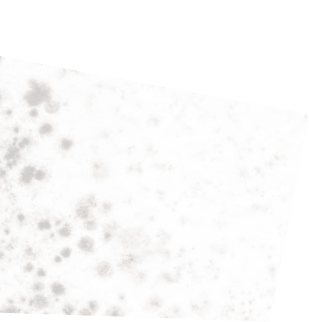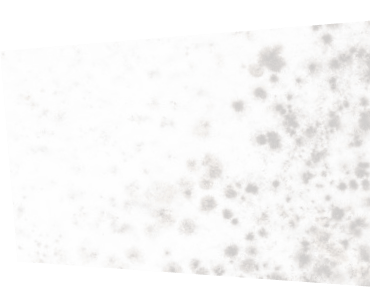Your laundry room is one of the more common sources for mold. It might be surprising because it’s an area of cleanliness – but laundry rooms are warm and humid – the perfect environment for mold. What’s important is to understand what causes mold to grow and how to prevent it.
In a typical residential home, laundry rooms offer an ideal environment for mold to grow – it’s a space that’s filled with warm air, humidity, and moist fabrics. The problem with any mold growth is the destructive quality on the home, as well as the potential health risks for family members.
Mold relies on a source of persistent moisture, along with a source of organic material. In the laundry room, the combination of temperature, air moisture, and dirty clothing all contribute to an environment that’s friendly to mold. Addressing these conditions helps with prevention.
Humidity
Mold thrives in humidity levels that are above 60%. In the laundry room, the washer and dryer create air moisture and humidity that are perfectly favourable to mold growth/development.
Temperature
Temperatures that are above 20°C (70°) are perfect for mold to grow. Even if room temperature is somewhat cooler, the motor of the washer and/or dryer will boost the room temperature.
Damp Clothes
The laundry room is a collection area for damp clothes – whether from clothes left in the washing machine itself, or damp clothes left in a hamper. Clothes also provide a feeding ground for mold.
How do I get rid of mold in my laundry room?
Preventing mold from growing and spreading is the best line of defense. Prevention is the best way to avoid arduous cleanup efforts and even potential health issues. In worst-case scenarios, mold remediation would be required – so preventing mold from growing is well worth the time.
- don’t leave dirty, damp laundry lying around the laundry room
- make every effort to keep the laundry room space clean and dry
- after a washing cycle, make sure that the machine is drying out
- a dehumidifier in the laundry room reduces excessive humidity
- indoor humidity, especially in the winter, should be 45% or less
- the laundry room should be well ventilated by the HVAC system
- persistent water leaks and/or plumbing issues should be fixed
- commercial drying agents (desiccants) can absorb air moisture
If mold has already established itself, it’s important to assess the source and scope of the growth infiltration. Because mold has a habit of “hiding”, it’s often better to have a mold expert assess the situation. In this way, the type of mold species can be assessed as well as all of the affected areas.
Is mold in the washing machine dangerous?
Whether mold is inside the washing machine, or somewhere in the laundry room, it means that conditions are “ripe” for mold to grow. It also means that corrective measures are required to get rid of the mold and determine the extent of growth. The truth is, it’s not uncommon to find mold in the laundry room and to discover that the original source is coming from the washing machine.
If a laundry room is not well ventilated, air moisture will accumulate consistently. Under such conditions, the potential for mold is increased. If a mold outbreak is on the small side, the health risks are low, but if the mold has spread then health risks are heightened. Whatever the scope of an outbreak, it should be addressed professionally, so the situation doesn’t get out of control.
Whether in the laundry room or elsewhere in the home, mold can be potentially dangerous. With ongoing mold exposure, occupants could be susceptible to a variety of health symptoms – like eye irritation; coughing or wheezing; and sinus congestion. While not every mold infestation has a health risk, it’s wise to have a professional assess the type of mold and the extent of infestation.
How do you know if your washing machine has mold?
There’s a tendency for some washing machines to promote mold growth. The front doors are well sealed, and this tends to trap moisture, creating pockets that are favourable for mold and mildew to grow. Top-load washers do not seal so tightly, so moisture buildup is not problematic.
If you have noticed deposits of mold in your washing machine, there are a few things that can be done. Surface mold, for example, can be cleaned up and removed quite simply. If mold from the washing machine has spread to the floor, wall, or ceiling, then professional help may be required.
Cleaning up mold is only a short-term solution – the source of the problem must be addressed. Here, it’s advisable to have an expert assess the situation and determine if the mold has spread out. A serious outbreak should not be cleaned up with domestic cleaning products/detergents.
Can the dryer kill mold?
Just because a dryer is hot does not mean it kills off mold. In fact, when lint build-ups excessively it can actually cause mold and mildew to develop. Clothes dryers should always be vented to the outside with an approved dryer duct. It’s also highly recommended that dryer ducts be checked on a regular basis to ensure that everything is venting out and that the ductwork is clear of lint.
As a rule, lint should be ideally removed from the dryer filter after every use. This will prevent moisture buildup and any potential for a fire. Lint also has a tendency to build-up along the dryer vent, which can encourage mold growth. A musty smell inside your dryer, or in the immediate area, is a sign that something’s not right – it’s time to clean the filter, the vent, and the ductwork.
A professional approach to mold assessment and removal
Mold contamination can be tricky – whether it’s inside a washing machine or already spread out on adjacent walls. Although visual detection can be easy to do, mold will often develops in some obscure places and can be more difficult to detect. That’s when professional help can be valuable.
At Inch-by-Inch Inspections, in-house professionals offer mold “sampling” in order to determine the health risks of a specific outbreak. Where required, laboratory analysis is undertaken and a report presented. This will establish whether there are potential health risks for the occupants.
If a mold infestation is serious, it must be remediated. But what’s most critical is to identify and isolate the source of moisture or water that has allowed the mold to grow. Here, Inch-by-Inch Inspections has the tools and equipment to accurately pinpoint the source and extent of mold.
From inspection, to assessment, to testing, to remediation, Inch-by-Inch will provide a complete picture of the situation. When it comes to removal, experienced crews have the proper tools and safe chemicals to provide a comprehensive cleanup and all of the necessary restoration work.
If you’re suspecting mold growth in the laundry room, having it assessed professionally is the best course of action - it’s much better to be safe than sorry. At Inch-by-Inch everything is done with safety in mind – and all work is in accordance with local, provincial and federal regulations.
Find out more about all of our services by calling 416-826-7172 directly or by visiting our company website to request a free quote.




